Back to Basics: DMPs vs. CDPs vs. Data Clean Rooms
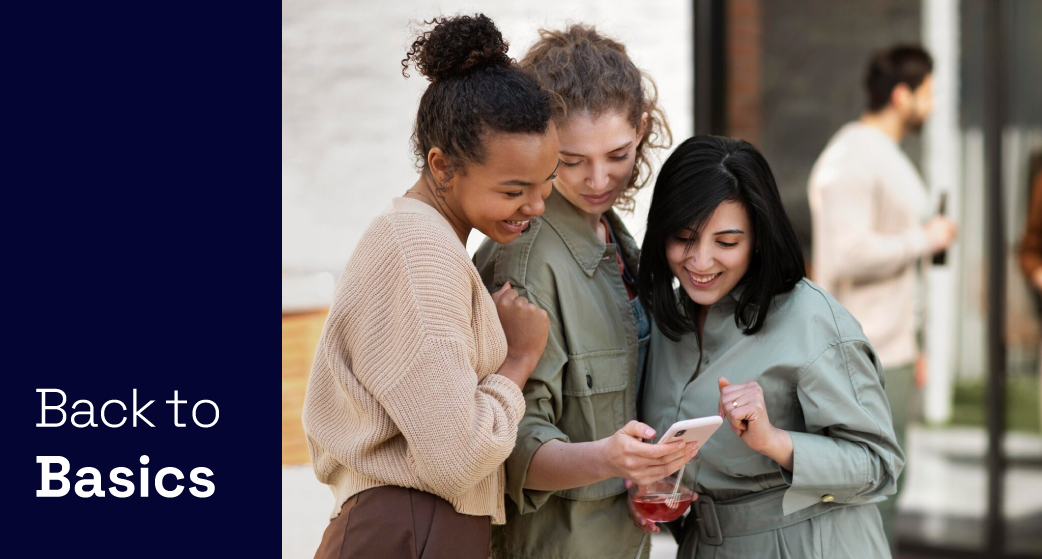
As privacy regulations and consumer expectations evolve, some data signals are fading away. This means advertisers need to use their first-party data more efficiently to target audiences effectively. Three technologies that help transform raw data into actionable campaign fuel are data management platforms (DMPs), customer data platforms (CDPs), and data clean rooms (DCRs).
No ID, no problem: 5 ways advertisers can own targeting outcomes on mobile
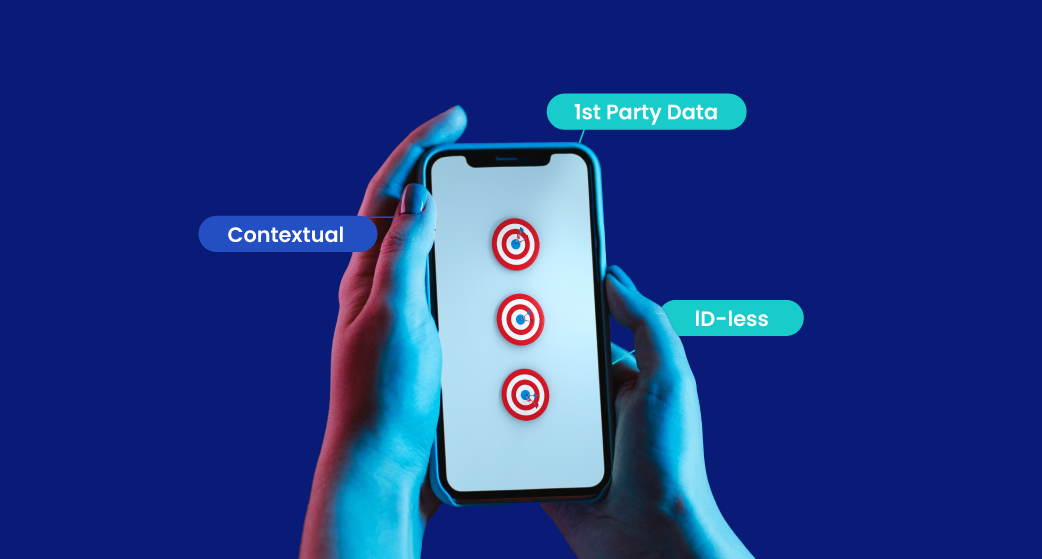
Will mobile targeting without cookies ever work as well as the good old days? Marketers are facing formidable challenges when advertising to mobile users. On iOS, they’re contending with Apple’s App Tracking Transparency (ATT) — this prevents tracking, drastically limiting ad attribution when consumers opt out of mobile identifiers (IDFA). Then they face third-party cookie deprecation on Chrome and Safari.
Swing the vote this election season: 2024 political ad spending
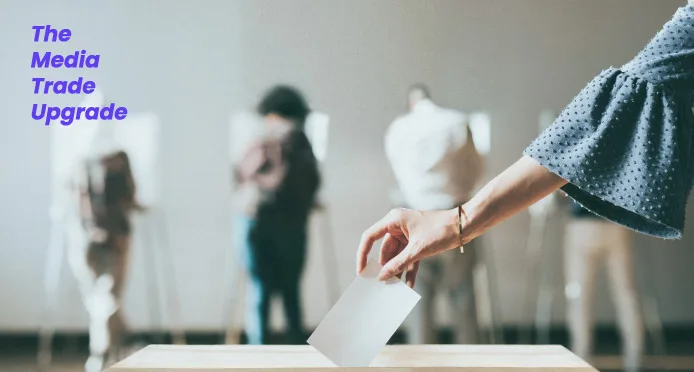
Welcome to The Media Trade Upgrade blog series, where programmatic traders can get essential info to stay ahead in ad tech — all in quick, bite-sized pieces. As marketers, we talk about campaigns all day, every day, every year. But in an election year, “campaigns” get more complicated. Media planners and traders build programmatic campaigns for political campaigns. The stakes are sky-high with election ads. Experts are forecasting that political ad spends for the 2024 election cycle will range from $10 billion up to $16 billion. That’s why we’re sharing the key ingredients for programmatic campaigns that resonate with voters. 🎯 Build a winning campaign with effective targeting Political marketing is about more than finding new voters — it’s also about building loyal relationships with your existing support base. Telling personalized, compelling stories at the individual level is key to success. Ensure your DSP of choice can amplify your first-party data, align and track upper-funnel and lower-funnel efforts, and easily deploy high-impact creative across screens. Maximize first-party data Uncover the attributes of your ideal voter profile, then use that data to find audiences who look like your campaign’s loyalists. Here’s how: Utilize tactics or upper and lower funnel Align upper-funnel awareness with performance tactics to ensure opportunities to reach voters, drive clicks, and inspire poll visits. Here’s how: Grow awareness Upper-funnel tactics DOOH CTV Inspire action Lower-funnel tactics Mobile Post-CTV retargeting on mobile 🗳 Hit your political campaign goals faster We know from experience that political campaigns usually mean high pressure plus maxed-out bandwidth — for months on end. Programmatic traders are tasked with reaching voters at every milestone from early stump speeches all the way to election day. There’s good news, though: PMPs and contextual solutions can speed up campaign success. Private marketplace (PMP) Fortunately for media buyers during election season, there’s an opportunity to serve ads on sites aligned with specific campaign goals and KPIs. It’s more important than ever to look for a DSP that has a PMP with political inventory. To save you time, a political PMP should automatically be compliant with state laws. Before electing to go PMP, ensure your DSP has safeguards in place on each political bundled deal. Incorporate to… Contextual targeting We all know behavioral-based advertising is at risk due to the decline of cookies — and that contextual targeting is a top alternative. But what you may not know is that not all contextual solutions offer the same precision. Many hinge on basic metadata like keywords and location. To maintain a competitive edge, it’s crucial to leverage a contextual solution that goes beyond surface-level targeting. When you’re weighing contextual solutions on the market, make sure to leverage one that prioritizes speed. That way, your message can captivate immediate audience interest — a crucial advantage in the bustling election season. 🤝 Make your life easier — partner with a supportive account team The final ingredient to success? A strategic and seasoned account team. The right partner can make all the difference when meeting your specific campaign needs. Before launching your political campaign, make sure your DSP has a supportive team with political experience who can guide you to success. This team should help you: (and more!) If you want to connect with us, and learn how Verve can help you target voters in a meaningful way, to drive conversions and maximize ROI this election season, get in touch. We’re happy to strategize. More resources for programmatic traders
The Media Trade Upgrade: An invitation to zero-party data and first-party data
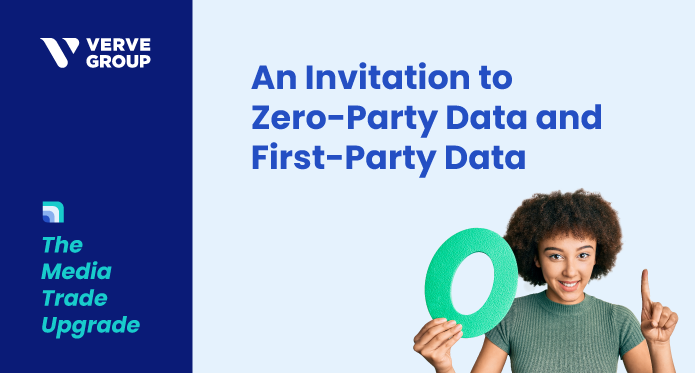
Welcome to the third edition of The Media Trade Upgrade, where programmatic traders can get essential info to stay ahead in ad tech – all in quick, bite-sized pieces. Consider today’s blog post your invitation to an exciting party . . . of zero-party and first-party data. We’ll quickly recap differences of the different types of data, all the way from the definition of zero-party to third-party data. (Don’t worry – there’s no such thing as fourth-party data . . . yet!) Then, we’ll dig into how programmatic media traders can use zero-party data alongside first-party data for media planning that crushes campaign goals. Countdown: From third-party to zero-party Triple Threat: Third-party data Third-party data describes how an entity without a direct relationship with the end-user collects that user’s data. Aggregators can obtain data from multiple sources to offer a broad view of users when combined with third-party inputs. This data can be stitched together across various inputs to help create a broader picture of a user. Third-party data works alongside first-party data to improve targeting lists. Determining if third-party data was legally collected is challenging with changing privacy regulations and user data control. Bridging the Gap: Second-party data Second-party data occurs when one entity shares data about its users with a trusted partner. The data quality and accuracy is high, since it was originally one company’s first-party data. Second-party data is also available for purchase on certain data marketplaces. Publishers may also sell information to marketers, such as an ecommerce platform selling purchase history or customer loyalty data to an advertiser. The Gold Standard: First-party data First-party data is information collected from a company’s customers or audience, such as profile information, website purchases, or loyalty programs. This type of data is given freely and verified for accuracy, making it highly valuable. Take a user who creates an account to access free content on a news site. Any personal information they provide directly to the publisher, such as their email, gender, or birth date, counts as first-party data. Similarly, purchase history is another key example of first-party data. Fast fact: 78% of businesses consider first-party data as the most valuable source of data for delivering personalization to audiences. The Unsung Hero: Zero-party data Zero-party data refers to information that users proactively and willingly share with brands and advertisers, typically through direct engagement such as surveys, polls, or preference centers. Unlike first-party data, which is collected through user interactions with a brand’s website or app, zero-party data is explicitly provided by the user, giving them even more control over their personal information. Benefits of zero-party data in advertising and media planning The impact of zero-party data on campaign planning is significant for several reasons: Better user experience Zero-party data often includes valuable insights into a user’s preferences, needs, and interests. This information allows advertisers to create more targeted and personalized campaigns, leading to increased engagement and conversion rates. In 2022, 62% of consumers said a brand would lose their loyalty if the brand delivers an un-personalized user experience, up nearly 20% from 2021. Enhanced trust and transparency By collecting zero-party data, brands can demonstrate their commitment to privacy and transparency. For example, a hair-care brand might use a quiz to create a custom shampoo formula tailored to the user. The quiz should be very explicit in communicating that the user’s input (a.k.a., zero-party data) will only be used to provide personalized product, content, or marketing experiences. This kind of transparency can help build trust between the brand and its audience, fostering long-term relationships and customer loyalty. Compliance with privacy regulations With the increasing focus on data privacy and the introduction of stricter regulations like GDPR and CCPA, using zero-party data can help agencies and brands ensure compliance. Since users willingly share zero-party information, there is less risk of violating privacy laws compared to relying on second- or third-party data sources. Reduced reliance on third-party data As browsers phase out third-party cookies and privacy concerns grow, advertisers need alternative data sources for targeting and personalization. Zero-party data offers a more reliable and sustainable solution, allowing brands to maintain effective marketing strategies despite changes. To incorporate zero-party data into campaign planning, media buyers at agencies should collaborate with their clients to create engaging experiences that encourage users to share their information. This may include interactive quizzes, polls, or preference centers that capture user insights while providing value in return, such as personalized recommendations or exclusive offers. By collecting zero-party data that can power future campaigns, advertisers can drive better results while respecting user privacy and fostering trust. Considerations Before RSVPing to the Zero-Party Parting Thoughts Data, privacy, and identity are top priorities in ad tech. Explore more in our in-depth eBook, Identity: Decoded, which unpacks the intricacies of identity for marketers, consumers, and the supply side of advertising. Follow along on LinkedIn, or subscribe to our newsletter below!
Programmatic for ecommerce: Slashing CPA, boosting ROAS for Ollie & Nic
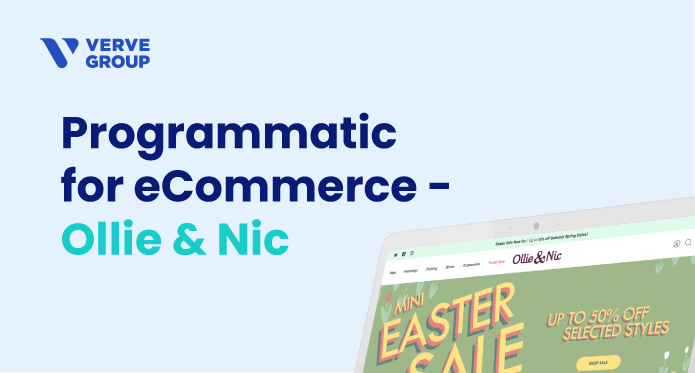
Family-run business Ollie & Nic had long focused on selling its fashionable products wholesale to other retailers. When COVID-19 hit, Ollie & Nic switched to an ecommerce model and began selling D2C. They prioritized digital advertising, which proved successful on Facebook but led to unpredictable costs. This realization led to Ollie & Nic seeking additional digital marketing options, and found Match2One. Our conversation with Josh Hill, Ollie & Nic’s director of ecommerce, explored the benefits of programmatic advertising and how it has helped Ollie & Nic achieve a x4.5 ROAS (return on ad spend) and an $11.6 CPA (cost per acquisition). Transforming from B2B wholesaler to D2C online retailer Before the world turned upside down in 2020, the family-run business had primarily focused on selling Ollie & Nic’s products wholesale to other retailers. But when COVID suddenly shuttered shop doors, Ollie & Nic quickly pivoted to an ecommerce model and began selling directly to consumers. The many challenges of adopting a new business model soon made it clear that Ollie & Nic needed to invest in digital advertising. The business had never used paid search or social media ads to sell directly to consumers (DTC or D2C), but Josh soon launched ad campaigns on Google and Facebook. The brand quickly saw results from paid social media advertising, especially on Facebook, the preferred social network for Ollie & Nic’s target demographic. However, advertising using Google Adwords was less fruitful, so Josh rerouted ad budget to Facebook. Ollie & Nic also strategically leveraged its first-party data to better target their campaigns. After initial success advertising on Facebook, Ollie & Nic hit a roadblock after the holiday shopping season. Just as Ollie & Nic was preparing to scale up digital promotions, their Facebook ad costs “essentially doubled,” says Josh. “Our Facebook CPMs doubled, so my ad spend doubled as well.” The shock of much-higher digital ad costs was an important learning experience for Ollie & Nic, which realized their reliance on Facebook left them exposed to unpredictable costs. This realization led Josh to seek alternative digital marketing options to diversify Ollie & Nic’s approach to paid media. Programmatic advertising comes to Shopify While considering different avenues of promoting Ollie & Nic online, Josh had a conversation with a friend who introduced the idea of programmatic advertising. Josh started looking into programmatic display ads and stumbled upon Match2One right as the platform’s new Shopify integration launched. Match2One, a part of Verve, was the first programmatic tool to build an app for ecommerce sellers to install directly from the Shopify app store. Josh launched Ollie & Nic’s first programmatic campaign less than a week after finding Match2One. According to Josh, “candidly, it actually was a very easy setup and I didn’t have to do much.” Since Ollie & Nic’s programmatic journey began, they’ve focused on using Match2One to run ROAS-based retargeting campaigns to drive conversions and sales. For Ollie & Nic, KPIs that matter most are return on ad spend (ROAS), click-through rate (CTR), and cost per acquisition (CPA). The analytics features within Match2One have made it easy for Josh to prioritize where to place resources – both time and budget. This creates efficiencies that make a big difference when running an ecommerce business with only two full-time employees. Set it and forget it While Facebook ads and email marketing remain important to Ollie & Nic’s overall digital marketing strategy, adding programmatic campaigns has proven to be easy and effective. Better still, Match2One’s machine learning optimizes campaigns so they become even more effective over time. According to Josh, running ROAS-based campaigns has become a seamless part of Ollie & Nic’s business: “It’s been quite nice just to set that ROAS campaign, let the AI do its work, and just leave it. Then I come and check in about every other week to see how it’s doing. This gives Match2One time to learn and then I can make changes if needed. I’ve been very happy with the results–so much so that I’ve just been letting it be. I update our creative in Match2One as and when I change our messaging. It’s been very hassle-free for me.” – Josh Hill, Director of Ecommerce at Ollie & Nic Key marketing tools for Shopify sellers While all businesses can benefit from programmatic advertising, ecommerce advertisers like Ollie & Nic rely on these Match2One features to run successful campaigns for their Shopify store: Programmatic advertising campaign results What do campaign metrics actually mean? Using industry-specific benchmarks for retail/ecommerce digital marketing, Ollie & Nic’s programmatic advertising campaigns cost up to 82% less per conversion. CPA/CPLProgrammatic CPA/CPLMeta & Google % difference $11.6Match2One $21.5Facebook 46% lower CPA $11.6Match2One $45.3Google Search 74% lower CPA $11.6Match2One $65.8Google Display Network 82% lower CPA Retail & Ecommerce Industry Advertising Benchmarking Sources: Emplify, Wordstream, Brafton Beyond the success of retargeting campaigns, programmatic advertising has also been a brand builder and prospecting tool for Ollie & Nic: “We’ve definitely seen success in having our adverts and our brand on websites outside the walled garden of Facebook. Really, it’s the Daily Mails of the world where we’ve really tapped into a customer that we previously might not have. So that’s been really good for us.” Marketing best practices for ecommerce shops Small and medium-sized businesses like Ollie & Nic know how to make the most of limited resources. Resource allocation – whether it’s time, budget, or inventory – comes down to prioritization. We asked Josh to share a few words of wisdom for fellow ecommerce businesses. Josh recommended identifying and committing to one or a few key products and scaling up on those products’ success. For example, Ollie & Nic has a top-selling handbag, so Josh makes sure they invest in plenty of inventory. His next digital campaign then promotes that same handbag – the investments in inventory and ads create synergies that drive sales. What’s next for Ollie & Nic Having weathered the pandemic and transition to DTC ecommerce, the future is bright for Ollie & Nic. With programmatic advertising now an important, high-ROAS…
iOS 14 and SKAdNetwork: Redefining user acquisition as we know it
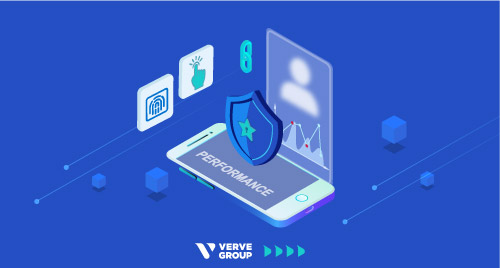
IDFA changes on iOS 14 will impact the future of user acquisition. Find out what steps performance marketers can take to prepare.
